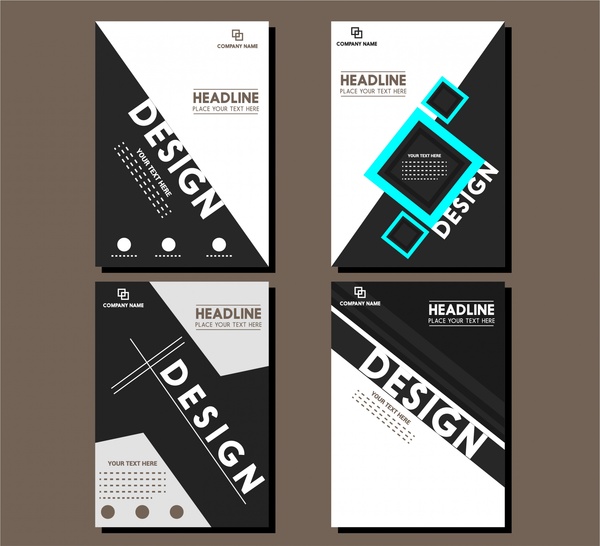By In publishing, a book’s cover can make or break its success. The cover is often the public’s first conversation with the book so it needs to start off with the right impression. The most difficult aspect of any book design is simply being noticed. Book covers today have to work even harder to stand out amongst crowded shelves, and to look arresting at short distances or shrunken down to thumbnail size on sites like Amazon.com.
18,927 Best Cover page design template free vector download for commercial use in ai, eps, cdr, svg vector illustration graphic art design format. Cover page design template, free vector, cover page template coreldraw, business cover page template, wedding cover page template, business report cover page templates, colorful cover page template, book cover page.
In this tutorial, Carlyn Beccia will show you the steps she used to redesign one of her favorite childhood stories, Watership Down by Richard Adams. She uses vector art to contrast with a soft portrait of the book’s two main characters — Hazel and Bigwig. Sometimes, just adding a modern twist to a traditional painting technique can give an updated look to a classic story. Figure 9: I drew the branches as vector art so that I would get a clean edge to contrast with the soft edges of the rabbit’s bodies. Adding a masked pattern On my branch layer, I made a selection around the branch with the Rectangular Selection tool. I made sure to get enough space at the top and bottom.
This step is important if you want to avoid feathering the black portion of your masked pattern. I then clicked the Capture Pattern button in the Pattern Libraries panel.
To display the panel, click Window Media Library Panel Patterns (see Figure 10). In the Capture Pattern dialog box, I named the brush Briar Branch 1, and set the Horizontal Shift, Rectangular Tile, and Vertical Shift to 0. I then repeated steps 7 & 8 five times to create five different Briar Branch brush patterns. If your masked pattern does not turn out properly, there are a couple of common mistakes. First, make sure that you are making your brush from left to right and not up and down. Second, your branch must be on a transparent layer before you hit the Capture Pattern button.
Lastly, select enough space from top to bottom to get a clean edge to your mask. Painting with patterns On a new layer, I drew a rough black frame around my painting. I selected the Pattern Pen Masked brush from the Patterns brush category.



From the Pattern Library, I selected one of my new Briar Branch patterns, and used my paint brush to paint in a swirling motion (see Figure 11). Figure 13: Brush feature settings As I paint, I vary the Feature setting of my brush. A higher Feature setting creates a stiffer brush that has fewer hairs (above left).
I also vary the Impasto amount so that the paint’s depth varies (above right). Adding weight Next, I further built up my paint by increasing the Impasto Effects (click Window Brush Control Panel Impasto). On the Impasto panel, I selected Color and Depth from the Draw to list box (see Figure 14 – A).
Then, I chose Pressure from the Expression list box (see Figure 14 – C). With the Depth Slider (see Figure 14 – B), I started with around 2% and slowly built up to 10% making sure to add heavier paint to the lighter areas so that they appear more three-dimensional.
Figure 15 One of the most common mistakes that I see in digital art is that the paint lacks weight, meaning the paint’s depth does not vary. Remember that you don’t have to use Impasto brushes to get impasto effects. Impasto effects can be added to most of Painter’s brushes. Step 5: Adding Texture Creating cross hatch Next, I wanted some light cross hatching on the background and the rabbit’s edges to give it a bit more texture. From the Brush Selector, I chose the Pencil brush category, and then the Grainy Variable Pencil. I could start cross hatching manually, but there is a faster way to create this texture. First, I created a small pattern of cross hatches on a white background (see Figure 16).
Free Design Book Cover Templates
Hello Carlos, If you are looking to create a full-size image that wraps around the back, spine, and front of the book, we would suggest making a painting that is the same size or a little larger than the dimensions of the flattened out book. The image can be shrunk slightly to fit if needed! Alternately, if you were looking to lay out the cover of your book along with creating the imagery for it, we would suggest a program such as CorelDRAW, which has tools more suited to this kind of work. You can find some examples of layout design in our and tutorials.
Hope this helps, Discovery Center Team November 19, 2018 at 12:23 am. Hello Judy, If you are looking to photograph a painting for a professional use such as a book cover, the most important part is making sure you have the camera well squared up with the painting – if the camera is tilted up or down, sideways, or crooked, the picture will be subtly distorted from the off-axis angle. This can be corrected digitally, but the best way to make sure the photo comes out even is to take your time setting up the shot, make sure there is plenty of light (soft light is often best, we don’t want any glare on the painting!) and use a tripod or other stand to keep the camera steady. Hope this helps!
How To Design Book Cover In Coreldraw For Mac Free
Discovery Center Team February 24, 2018 at 9:42 pm.
About Cover Images We make every effort to use royalty free, public domain images whenever possible in the creation of your cover. However, there are times in the premium cover process where specific images are required to portray your message with your cover. These costs will be passed on to you through additional invoicing. We will supply you with invoices and copies of the licensing agreements regarding these images for your files. We will also add this information to the copyright page of your book. All fees will be communicated to you in advance for your approval.